NIMBioS Calendars: Events Seminars Live Streaming Visitors Working Groups Workshops Tutorials Other
2011 Archive: NIMBioS Seminars
 In conjunction with the interdisciplinary activities of the National Institute for Mathematical and Biological Synthesis (NIMBioS), a seminar series on topics in mathematical biology is hosted at NIMBioS every other Tuesday at 3:30 p.m. (unless otherwise noted) in Hallam Auditorium, Room 206, Claxton Building, 1122 Volunteer Blvd.
Seminar speakers focus on their research initiatives at the interface of mathematics and many areas of the life sciences. Light refreshments are served in the 1st floor visitor breakroom beginning 30 minutes before each talk. Faculty and students from across the UT community are welcome to join us.
In conjunction with the interdisciplinary activities of the National Institute for Mathematical and Biological Synthesis (NIMBioS), a seminar series on topics in mathematical biology is hosted at NIMBioS every other Tuesday at 3:30 p.m. (unless otherwise noted) in Hallam Auditorium, Room 206, Claxton Building, 1122 Volunteer Blvd.
Seminar speakers focus on their research initiatives at the interface of mathematics and many areas of the life sciences. Light refreshments are served in the 1st floor visitor breakroom beginning 30 minutes before each talk. Faculty and students from across the UT community are welcome to join us.
Video Archive of NIMBioS Seminars
Archived Seminar Calendars:
2020
2019
2018
2017
2016
2015
2014
2013
2012
2011
2010
2009
NIMBioS Seminar Abstracts
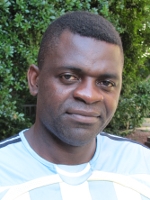 Time/Date/Location:
3:30 p.m, Nov 22, NIMBioS Lecture Hall (RM 403), 1534 White Ave., Suite 400
Time/Date/Location:
3:30 p.m, Nov 22, NIMBioS Lecture Hall (RM 403), 1534 White Ave., Suite 400
Speaker: Calistus Ngonghala, NIMBioS Postdoctoral Fellow
Topic: Backward bifurcation and periodic oscillations in model for the dymamics of malaria transmission
Abstract: A deterministic ordinary differential equation model for the dynamics of malaria transmission that explicitly integrates the demography of the malaria vector and its interaction with the human population is developed and analyzed. The model is different from standard malaria transmission models in that the vectors involved in disease transmission are those that are questing for human blood. Model results indicate the existence of nontrivial disease-free and endemic steady state solutions, which can be driven to instability via a Hopf bifurcation as a parameter is varied in parameter space. Our model therefore captures oscillations that are known to exist in the dynamics of malaria transmission without recourse to external seasonal forcing. Additionally, our model exhibits the phenomenon of backward bifurcation. Two threshold parameters that can be used for purposes of control are identified and studied. Possible reasons why it has been difficult to eradicate malaria are also advanced. Click here for more information. Seminar flyer.
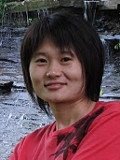 Time/Date/Location:
3:30 p.m, Nov 8, NIMBioS Lecture Hall (RM 403), 1534 White Ave., Suite 400
Time/Date/Location:
3:30 p.m, Nov 8, NIMBioS Lecture Hall (RM 403), 1534 White Ave., Suite 400
Speaker: Juanjuan (JJ) Chai, NIMBioS Postdoctoral Fellow
Topic: On the number of binary characters needed to recover a phylogeny using maximum parsimony
Abstract: In phylogenetics it is known that for a given set of characters, under maximum parsimony, there could be more than one phylogeny with the most parsimonious score. In a special case where each character changes its state only once, the most parsimonious tree is unique. This case is called homoplasy-free, and the number of characters required is on the same order of the number of taxa in the phylogeny. Steel and Penny conjectured that given C*logN binary characters, one can recover the unique maximum parsimonious tree with N taxa. We give an explicit construction to show that this is true. Biologically, this means that some patterns of homoplasy are phylogenetically informative and can exponentially reduce the amount of data needed to resolve a phylogeny. Click here for more information. Seminar flyer.
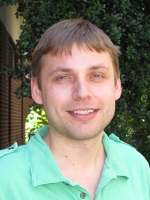 Time/Date/Location:
3:30 p.m, Oct 11, NIMBioS Lecture Hall (RM 403), 1534 White Ave., Suite 400
Time/Date/Location:
3:30 p.m, Oct 11, NIMBioS Lecture Hall (RM 403), 1534 White Ave., Suite 400
Speaker: Daniel Ryan, NIMBioS Postdoctoral Fellow
Topic: Non-random dispersal in intraguild predation communities
Abstract: Intraguild predation (IGP) refers to a community module that blends competitive and predator/prey dynamics. Although IGP is widespread in nature, spatially homogeneous models for IGP communities predict that stable coexistence is only possible if restrictive conditions on resource productivity, competitive ability and predation susceptibility are satisfied. This talk will consider the population dynamics of an IGP module in a spatially heterogeneous landscape and examine how non-random dispersal can lead to more robust coexistence states. Click here for more information. Seminar flyer.
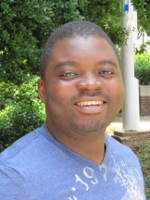 Time/Date/Location:
3:30 p.m, Sep 27, NIMBioS Lecture Hall (RM 403), 1534 White Ave., Suite 400
Time/Date/Location:
3:30 p.m, Sep 27, NIMBioS Lecture Hall (RM 403), 1534 White Ave., Suite 400
Speaker: Orou Gaoue, NIMBioS Postdoctoral Fellow
Topic: Using a matrix population model to understand the short and long-term consequences of wild plants harvest
Abstract: Non-timber forest products harvest shapes population dynamics by altering demographic processes such as survival, growth and fertility. Matrix population models are often used to project the effect of harvest on population dynamics and draw conclusion on the sustainability of harvest. I developed stage-based matrix population models for African mahogany (Khaya senegalensis), a critical source of fodder (foliage) and medicine (bark) for local people in West Africa. I will first show that contrary to many studies, inferring the sustainability of non-timber forest products harvest from analysis of population structure and reproduction rather than of population dynamics must be done with caution and considers the heterogeneity in landscape as well as differences in climate. Second, I will show that using asymptotic rather than the transient growth rates may underestimate the effects of harvest and possibly of other disturbances. I will discuss the management implications of these results. Finally, with evidence that harvest affects population dynamics in deterministic and stochastic environments, I will show that these effects may translate into effects on life history traits and tree senescence. Non-timber forest products harvest has been promoted as a sustainable alternative to logging and land clearing in extractive reserves. This was based on assumptions that this kind of harvest has minimal if any effect on forest structure, composition and the dynamics of harvested populations. Here I argue that more caution is needed to ensure the sustainability of harvest. Click here for more information. Seminar flyer.
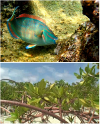 Time/Date/Location:
3:30-5:00 p.m, Sep 15, Toyota Auditorium, Howard Baker Center,
1640 Cumberland Ave., UT Campus
Time/Date/Location:
3:30-5:00 p.m, Sep 15, Toyota Auditorium, Howard Baker Center,
1640 Cumberland Ave., UT Campus
Speaker: James Sanchirico (Environmental Science and Policy, Univ. of California Davis)
Co-sponsor: Howard H. Baker Jr. Center for Public Policy
Topic: The role of bioeconomic modeling in the design and analysis of ecosystem based management policies
Abstract: A scientific consensus is developing on the need to transform marine and coastal management to a more holistic ecosystem-based approach. The presentation will investigate the economic and ecological gains from expanding the scope of management objectives in two related systems. The first analysis utilizes a multispecies bioeconomic model for a Caribbean coral-reef ecosystem to determine the optimal ecosystem-based fishery management (EBFM) harvesting rates for both predator (Nassau grouper) and prey (Stoplight parrotfish) species. The second analysis investigates the economic and ecological implications of habitats providing multiple ecosystem services, using fish dynamics in a coupled coral reef-mangrove-seagrass environment as the model system. Click here for more information. Seminar flyer.
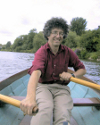 Time/Date/Location:
3:30 p.m, Sep 13, NIMBioS Lecture Hall (RM 403), 1534 White Ave., Suite 400
Time/Date/Location:
3:30 p.m, Sep 13, NIMBioS Lecture Hall (RM 403), 1534 White Ave., Suite 400
Speaker: Alan Hastings, Environmental Science and Policy, Univ. of California Davis.
Topic: Timescales, multiple stable points, and tipping points
Abstract: I will start with some simple models for dynamics of coral reefs (joint work with Pete Mumby and Julie Blackwood) that provide illustrations of the ideas of multiple stable points and the possibility of changes in system dynamics. Models will illustrate issues of "controlling" the system to have it remain or be restored to a desirable state. These models will illustrate issues of time scales. I will then discuss several more abstract models that illustrate the difficulty of obtaining early warning signs for these regime shifts (work with Derin Wysham). I will finish by discussing recent work with Carl Boettiger on the statistical issues of detecting early warning signals for regime shifts even in the cases where they would be theoretically expected. Click here for more information. Seminar flyer.
vv
 Time/Date/Location:
3:30 p.m, Sep 6, NIMBioS Lecture Hall (RM 403), 1534 White Ave., Suite 400
Time/Date/Location:
3:30 p.m, Sep 6, NIMBioS Lecture Hall (RM 403), 1534 White Ave., Suite 400
Speaker: William Holmes, Mathematics, Postdoctoral Fellow, Univ. of British Columbia
Co-sponsor: UT Math Dept.
Topic: A local analysis of symmetry breaking with applications to HeLa cell polarization: Theory and experiment
Abstract: Polarization, symmetry breaking, and more generally patterning play a vital role in many cellular functions including chemotaxis, the topic of this work. During chemotaxis, mammalian cells sense an external gradient of attractant (or repellant). This leads to re-organization of regulatory molecules (Rho-GTPases and Phosphoinositides (PIs)) that control the highly choreographed growth, contraction and destruction of the cytoskeleton, which is necessary for motion. Holmes will discuss recent collaborative work (with the experimental group of Andre Levchenko at Johns Hopkins Univ.) that explores the biomolecular interactions that lead to polarization in a specific cell type (HeLa). A "wave pinning"-based model incorporating Rho-GTPases and PIs with feedback between them will be presented. A brief overview of the relevant biochemical/biomechanical machinery responsible for motility will be given to present a complete picture. An overview of modeling techniques used in this field will be given with an emphasis on the mathematical basis of a new class of pattern forming models, referred to as "wave pinning" (Mori et al., Biophys J. 2008). New pseudo-analytic methods, involving only ODE techniques and the use of packaged numerical continuation software (eg. Auto or MatCont) for simultaneously performing linear stability analysis, Turing stability analysis, and detecting threshold based patterning (e.g. Wave pinning) will be presented. This will be used to analyze the discussed model and connect it to experiments, providing hypotheses about the underlying biochemical interactions responsible for polarization. Click here for more information. Seminar flyer.
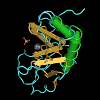 Time/Date/Location:
3:30 p.m, April 5, NIMBioS Lecture Hall (RM 403), 1534 White Ave., Suite 400
Time/Date/Location:
3:30 p.m, April 5, NIMBioS Lecture Hall (RM 403), 1534 White Ave., Suite 400
Speaker: Karen Page, NIMBioS Sabbatical Fellow, Dept. of Mathematics, University College London
Topic: Developmental and evolutionary dynamics
Abstract: During the course of embryonic development, an initially homogeneous population of cells organizes into an exquisitely patterned organism, consisting of multiple cell types. How the information encoded in the DNA is interpreted to create this 3-dimensional pattern of cell types has intrigued scientists for many years. One strategy for specifying cellular differentiation is the local production and subsequent diffusion of a "morphogen." The signal conferred to cells varies in space and is used by them to decide their fates. An example morphogen is Sonic Hedgehog, which, in vertebrates, specifies neural progenitor domains. We present a mathematical model of the gene regulatory circuit that interprets the Sonic Hedghog signal at the cellular level. We show that the circuit responds to both the level and duration of the signal and confers properties of hysteresis and robustness on cells. We show that, in addition to switch-like behavior, the circuit can also exhibit oscillations. We therefore term the circuit the "AC-DC motif." We suggest that through changes in for example a binding affinity, the motif could have been re-used during the course of evolution for either switch-like or oscillatory functions, both of which are important in embryonic patterning. I will discuss future work which is planned to look at the effects of noise in this neuronal patterning. If there is time, I will also present preliminary work on the migration of neural crest cells and work on evolutionary dynamics. The latter ties together various deterministic mathematical frameworks for describing evolutionary change and I will also outline plans for a stochastic description.
Click here for more information.
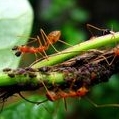 Time/Date/Location:
3:30 p.m, Mar 22, NIMBioS Lecture Hall (RM 403), 1534 White Ave., Suite 400
Time/Date/Location:
3:30 p.m, Mar 22, NIMBioS Lecture Hall (RM 403), 1534 White Ave., Suite 400
Speaker: Fred Adler, Depts. of Mathematics and Biology, Univ. of Utah
Topic: The virtues of waiting, procrastinating and avoiding conflict
Abstract: Ants are among the most successful organisms on Earth, not least because they have created an impression of being hard-working automatons who put even graduate students to shame. I will show that ants might in fact succeed in part through waiting for other individuals to make the hard decisions and by avoiding stressful situations. Unfortunately, I have not quite gotten around to proving these results, but will give a sketch of how they could be demonstrated.
Click here for more information.
 Time/Date/Location:
3:30 p.m, Mar 8, NIMBioS Lecture Hall (RM 403), 1534 White Ave., Suite 400
Time/Date/Location:
3:30 p.m, Mar 8, NIMBioS Lecture Hall (RM 403), 1534 White Ave., Suite 400
Speaker: *Mark McPeek, David T. McLaughlin Distinguished Professor of Biological Sciences, Dartmouth.
Topic:Climate change and how we got the biota we have today
Abstract: Most ecological and evolutionary theory, even theory built on stochastic dynamics, is formulated for an unchanging environment. However, the history of the Earth is one of continuous climate change, and radical change at that over the past few million years. In his talk, Dr. Mark McPeek will explore these issues and illustrate them using his work on the adaptation and diversification of Enallagma damselflies in North America over the past 15 million years. Periodic climate change over the Pleistocene has continually caused communities to disassemble and the reassemble in different places on the continent. This disassembly/reassembly cycling seems to have driven the diversification of this clade, with unexpected ecological and evolutionary consequences. Given this, Dr. Mark McPeek will argue that current ecological and evolutionary theory is not built for the biota we now have on Earth to study.
Click here for more information.
 Time/Date/Location:
3:30 p.m, Mar 1, NIMBioS Lecture Hall (RM 403), 1534 White Ave., Suite 400
Time/Date/Location:
3:30 p.m, Mar 1, NIMBioS Lecture Hall (RM 403), 1534 White Ave., Suite 400
Speaker: *Peter Hammerstein, Institute for Theoretical Biology, Humboldt University Berlin
Topic: Manipulative strategies and their evolution
Abstract: In social psychology, the term manipulation refers to a process by which one affects the decisions of others to one's own advantage. Advertisers, for example, act to their own advantage when they induce an interest in the products of companies from which they receive their income. The advertisers' success depends on how well they understand the mechanisms of our mental machinery and whether they are able to make strategic use of this knowledge. At an appropriate level of abstraction there are interesting parallels in biology. Microorganisms often manipulate regulatory networks of their hosts in ways that deserve to be called "strategic" and are based on subtle interference with these networks. Intracellular bacteria of the genus Wolbachia are a good case in point, since they modulate basic processes of their hosts, such as cell division and differentiation, in most impressive ways. These modulations follow a strategic logic that can be revealed through an analysis inspired by evolutionary game theory. It turns out that some of the 'tricks' used by Wolbachia (e.g., to establish a poison-antidote system) are not unheard of in the human world. The second part of the talk deals with the ways in which plants manipulate brains. It is important to understand these manipulations in order to develop preventive measures against drug addiction. Again inspired by game theory one would ask, in particular, whether there is any strategic logic to the effect nicotine has on our mesolimbic reward pathways? This question leads into the "paradox of drug reward." Dr. Hammerstein will present this paradox and an attempt to resolve it.
Click here for more information.
 Time/Date/Location:
3:30 p.m, Feb 22, NIMBioS Lecture Hall (RM 403), 1534 White Ave., Suite 400
Time/Date/Location:
3:30 p.m, Feb 22, NIMBioS Lecture Hall (RM 403), 1534 White Ave., Suite 400
Speaker: Dr. Emily Moran, NIMBioS Postdoctoral Researcher
Topic: Community genetics and global change: Effects of tree genotype and atmospheric pollutants on population and community dynamics
Abstract: Community genetics aims to bridge the divide between population genetics and community ecology by recognizing how genetic variation in dominant plant species helps create the environment experienced by other species. Genetic variation in plants influences numerous community and ecosystem properties, and genotype-specific responses to global change may be expected to have cascading effects on higher-level traits such as herbivore communities, nutrient cycling and carbon storage. Given the complexity of the interactions involved, appropriate mathematical and statistical models must be developed in order to scale up to community and ecosystem properties. The first question to be addressed is: Can atmospheric pollutants (such as CO2 or O3) exert a measurable selective effect on woody plants over short timescales? As part of her NIMBioS postdoctoral work, Dr. Moran has been developing a hierarchical Bayesian model to test whether patterns of mortality in the AspenFACE experiment (in which replicates of multiple aspen clones were exposed to ambient, elevated CO2, elevated O3, and elevated CO2 & CO3) indicate the existence of genotype x environment interactions. During the seminar, Dr. Moran will discuss her preliminary findings, which suggest that there are significant genotype x environment interactions in aspen mortality under elevated CO2 and ozone, primarily due to differences in growth responses between aspen clones, as well as how such G x E interactions can affect the genetic composition of plant populations and how this may in turn affect the performance of herbivorous insects.
Click here for more information.
 Time/Date/Location:
3:30 p.m, Feb 8, NIMBioS Lecture Hall (RM 403), 1534 White Ave., Suite 400
Time/Date/Location:
3:30 p.m, Feb 8, NIMBioS Lecture Hall (RM 403), 1534 White Ave., Suite 400
Speaker: Dr. Cristina Lanzas, NIMBioS Faculty, Dept. of Comparative Medicine, Univ. of Tennessee, Knoxville
Topic: Transmission and control of foodborne pathogens at preharvest
Abstract: Foodborne diseases are a significant healthcare and economic burden. Most foodborne pathogens behave as commensals, harbored in the gastrointestinal tract of farm animals. Understanding the transmission of foodborne pathogens at the farm level is necessary to design effective interventions to improve pre-harvest food and environmental safety. In recent years, mathematical models of infection have been incorporated in the epidemiologist repertoire to gain a better understanding of foodborne pathogen ecology and to evaluate control strategies. Dr. Lanzas will discuss recent progress and challenges in modeling the dynamics of foodborne pathogen transmission at the farm level.
Click here for more information.
 Time/Date/Location: 3:30 p.m., Jan 25, NIMBioS Lecture Hall, 1534 White Ave., Suite 400
Time/Date/Location: 3:30 p.m., Jan 25, NIMBioS Lecture Hall, 1534 White Ave., Suite 400Speaker: Dr. Tony Jhwueng, NIMBioS Postdoctoral Fellow
Topic: Modeling phylogenetic comparative methods with hybridization
Abstract: Phylogenetic Comparative Methods (PCMs) are statistical methods for analyzing the data on a group of related species. Questions such as "How does brain mass vary with body mass in a group of species?" and "What are likely ancestral states?" all involve comparative data. While hybrid species are known to share similar phenotypes inherited from their parents, the rate of variation of a trait between the hybrid and its parents is rarely studied by comparative analysis. Because the species are related by shared evolutionary history, it may not be reasonable to view such data as independent, identically distributed realizations of the same stochastic process. Instead, information about the shared evolutionary history, as given by the phylogeny for the species, is often incorporated into the analysis. If evolution involves ancient hybridizations, then we cannot simply use the phylogeny to represent the affinity among species but instead use the phylogenetic network. Dr. Tony Jhwueng develops possible PCMs when there are ancient hybridization events in addition to speciation events. The new PCMs are applied to a real data set to investigate whether the rate of variation is statistically significantly different between the hybrid and other species. Several simulation studies to assess the validity of the new PCMs are also performed. Dr. Jhwueng will discuss his research and findings during the seminar.
Click here for more information.
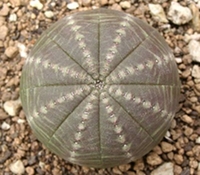 Time/Date/Location: 3:30 p.m., Jan 12, NIMBioS Lecture Hall, 1534 White Ave., Suite 400
Time/Date/Location: 3:30 p.m., Jan 12, NIMBioS Lecture Hall, 1534 White Ave., Suite 400Speaker: Dr. Mark Kirkpatrick, T.S. Painter Centennial Professor, Section of Integrative Biology, Univ. of Texas, Austin. Dr. Kirkpatrick is a NIMBioS Postdoctoral Fellows Invited Distinguished Visitor.
Topic: Chromosome evolution under local adaptation and sexual conflict
Abstract: Genomes of many organisms are very labile and show rapid evolutionary changes in chromosome structure and function. Although these changes have been studied for nearly a century, we know little about the evolutionary forces involved. The talk will explore this topic from two perspectives. First, I show how sexual conflict can drive the origin of new sex chromosomes and cause changes between XY and ZW sex determination systems. Second, I discuss how local adaptation can drive the evolution of chromosomal rearrangements. This idea is explored with a population genetic model and with an analysis of data from populations of a malaria mosquito. The results suggest that polymorphic chromosome rearrangements may be involved in very strong selection and nonrandom mating and play important roles in speciation.
Click here for more information.
NIMBioS
1122 Volunteer Blvd., Suite 106
University of Tennessee
Knoxville,
TN 37996-3410
PH: (865) 974-9334
FAX: (865) 974-9461
Contact NIMBioS


